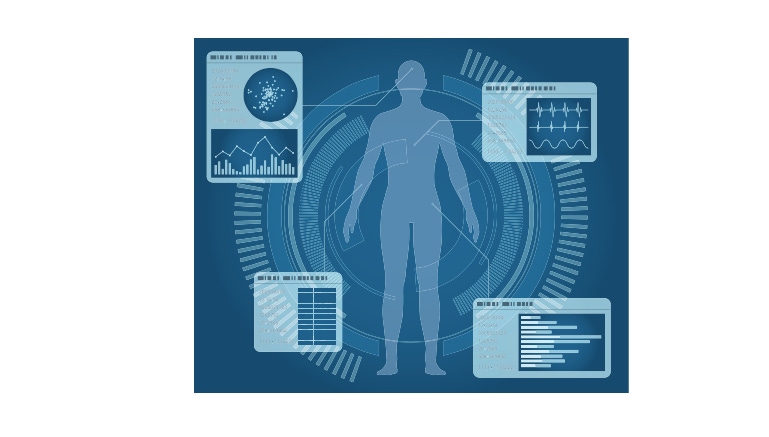It’s easy to envision the roles implantable sensors could perform. But is it too hard to overcome the risks?
August 9, 2018

Why don’t we have in vivo sensors sprinkled around our bodies? How long until we stop investing in temporary ex vivo sensors and start investing in permanent in vivo ones? What technological barriers are in the way? Where would they go for maximum usefulness? What would be the benefit?
Numerous medical device developers are investing in ex vivo sensors for a variety of applications, from wearables that support wellness, to outpatient tracking or non-invasive single-use diagnostics. I’ve been on a bit of a sci-fi kick lately, and it seems a pretty common motif that in the (fictional) future, everyone has “sensors” throughout their body, bouncing telemetry back to the spaceship captain and, most importantly, helping to build suspense during intense space battles.
It’s got me thinking about biomedical data points we may want to track, which technology they would use, and what kind of data we’d get. Here are some ideas:
Movement Analysis
Technology and location: Piezo sensors on the joints
Used to:
Quantify changes in range of motion.
Alert following single traumatic events: overextension, impacts, falls, etc.
Diagnose potential long-term problems early: poor posture, bad gait, etc.
Track wellness: sleep, exercise.
Cardiac Rhythm Tracking
Technology and location: Implantable EEG in the chest
Used to:
Quantify heart stress or irregularities.
Indicate general wellness.
Notify changes in pattern that may indicate irregularities.
Alert following acute event: heart attack.
Breathing Tracking
Technology and location: Accelerometer(s) or piezo sensor(s) in the chest/trachea
Used to:
Support assessment of sicknesses.
Help track wellness: sleep, exercise.
Body Temperature Sensor
Technology and location: Temperature sensor in the body’s core or brain
Used to:
Support diagnostics of sicknesses.
Indicate wellness associated with metabolic patterns.
Indicate activity levels in muscles, brain.
Fluid Analyzers
Technology and location: Sensor (such as miniature coulter counter) in blood stream
Used to:
Count white blood cells (early indicator of acute sickness).
Count red blood cells (indicator of more chronic conditions).
Check for specific diseases/cancer, depending on sensor array.
One main technology barrier for all these theoretical sensors is the same: how do we keep them powered over an entire lifetime? One option is to use the body’s ambient temperature through the thermocouple effect, but that requires a significant temperature differential. Using glucose from food is a neat idea, but it is a long way away. Wireless charging for in vivo medical devices is on the rise and can use RF, ultrasound,near-infrared, or other technologies (such as near-field induction). One of these would probably be the most likely scenario, as they can also be coupled with the technology to transmit data back (e.g., antennas that send data and receive energy).
Unfortunately, many sensors would be very invasive and would be imparting significant risk to the patient both during surgery and over time as the materials breakdown. This risk, plus the fact that most of the issues ‘solved’ by these sensors are diagnosable by other common means, are the primary reason in vivo sensors like this aren’t commonly being developed. For example, if your joint hurts, you would just go to the doctor; if you feel sick, you would stay home and rest.
Our bodies have developed sensors (i.e., nerves) over eons of evolution to diagnose these exact issues, but our bodies aren’t perfect: they include a fail-safe to allow us to ignore short-term pain, are a little slower than we’d like at times, and are very bad at quantification. The main benefit to an array of in vivo sensors is to provide the patient with accurate information directly, allowing them to avoid the doctor for minor troubles and avoiding issues of over-diagnosis (though, one risk of this technology is that additional data could itself also lead to over-diagnoses). Additionally, if the patient does have to go to a clinic, physicians can get faster access to standardized, quantified data for more rapid diagnostics (which can also help avoid issues like relative pain). Time is money, so both faster, more accurate in-clinic diagnostics and fewer clinical visits overall would have massive costs savings in the long run. Lastly, early intervention is the key to using simpler treatments for most ailments, meaning more early treatments (like changes in lifestyle) and fewer late-stage interventions (such as surgery) may have a leviathan effect on long-term healthcare costs.
Perhaps one day the technology will be so available, affordable, useful, and minimally invasive that the benefits will outweigh the cons. It certainly would be helpful if my starship captain could know that I was truly sick without having to get a space-doctor’s note.
About the Author(s)
You May Also Like


